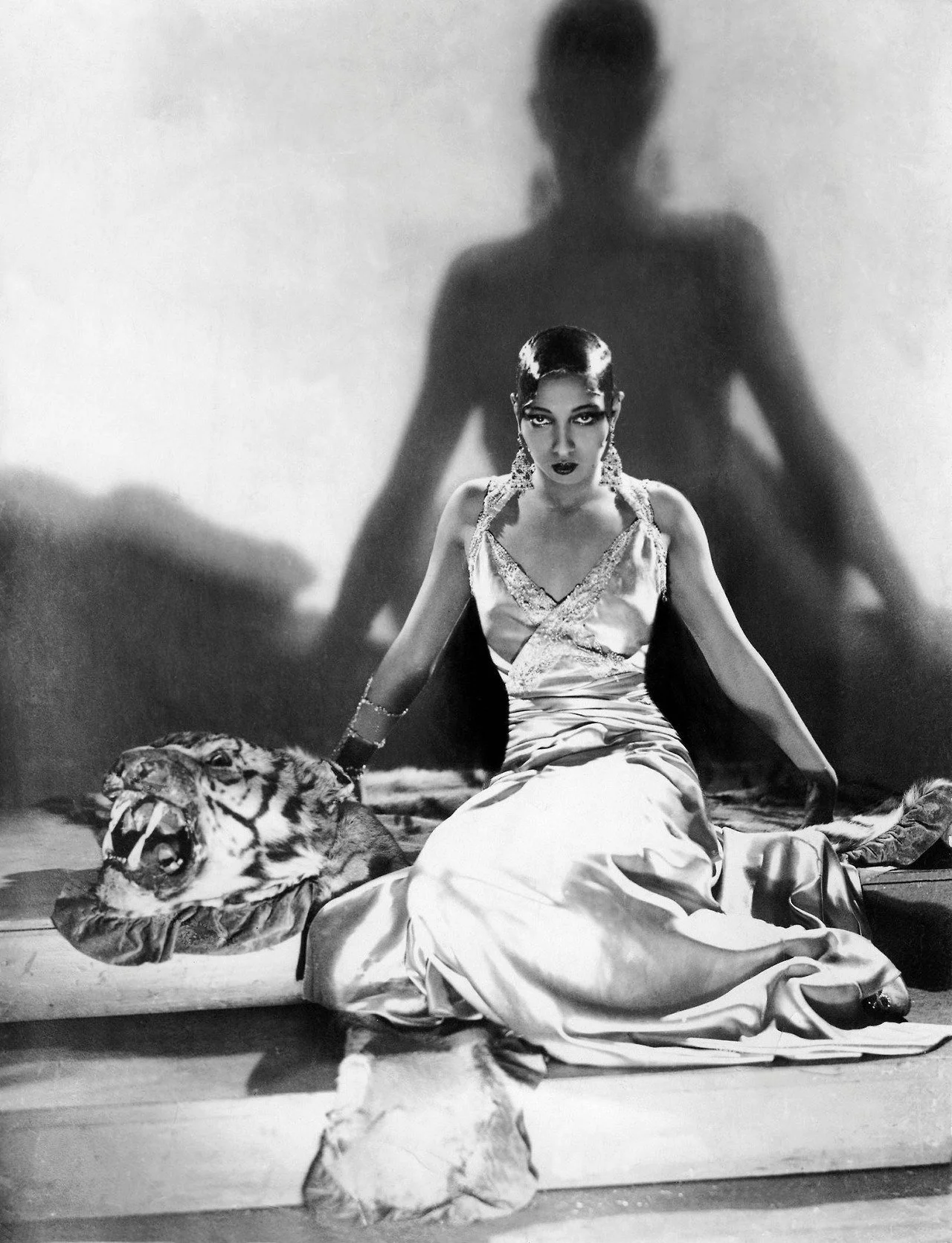In April 1975, Josephine Baker stepped onto the stage of Paris’s Bobino Theatre for the last time. The air was thick with smoke and memory. She had outlived eras, outrun censors, danced through wars, and shaped not only herself but the century that shaped her. Her body, though older, moved with the same fierce intelligence it always had—an art not merely of movement, but of becoming. At the close of the performance, the crowd rose, and the applause surged like a wave. Four days later, she was gone.
Arriving in Paris at nineteen with La Revue Nègre, she became a sensation at the Folies Bergère within a year—wearing little more than a skirt of rubber bananas and strands of pearls in her now-iconic “Danse Sauvage.” Paris, in its hunger for fantasy, adored her. They made her an icon, a spectacle, a vision of the exotic and other. But Baker was never passive in her own myth. She watched as she was watched, shaping herself as deliberately as she moved. She turned performance into authorship, spectacle into strategy.
She loved men and women—her bisexuality quietly lived, if not openly declared. When war broke out, she served the French Resistance as a courier, slipping coded messages into sheet music and lingerie. France awarded her medals and refuge, but its admiration was complicated. Much of it was shaped by an exoticising eye—one that celebrated her image while projecting its own fantasies. She was fetishised, yet she held the gaze—and bent it to her purpose.
When America denied her dignity, she stood at the Lincoln Memorial and demanded it. On her return tour in the 1950s, she refused to perform for segregated audiences, requiring venues to reflect the ideals she embodied.
Her utopian experiment at Château des Milandes—where she raised twelve adopted children from twelve different countries—was intended as a living model of harmony across race and culture. But it, too, held contradictions. Some of the children would later speak of being made symbols more than sons and daughters, of a public ideal that did not always translate to private ease.
In 2024, almost 120 years after her birth, Berlin’s Neue Nationalgalerie opened “Josephine Baker: Icon in Motion,” an exhibition curated by Klaus Biesenbach, artist Kandis Williams, and scholar Terri Simone Francis. Through a rich array of visual materials—photographs, books, film programmes, drawings, record covers, and personal papers—the show mapped Baker’s many lives: dancer, singer, screen presence, spy, and civil rights advocate. But it did more than look back. Alongside these archival treasures, the exhibition placed works by contemporary artists who echo her legacy—Simone Leigh, Faith Ringgold, Carrie Mae Weems—each refracting Baker’s image through new lenses. Their presence made clear that Baker is not merely a historical figure, but a living force in contemporary art and visual culture.
That final night in Paris, she did not perform nostalgia. She performed presence. Draped in a sheer bodystocking and crystals that caught the light, her body bore the quiet markings of time, but there was nothing diminished in her motion. In her gleam, there was philosophy, there was rhythm, there was an insistence on life in its most distilled form. No farewell, just continuation.
Even now, her silhouette flickers at the edge of history— impossible to frame in stillness.
